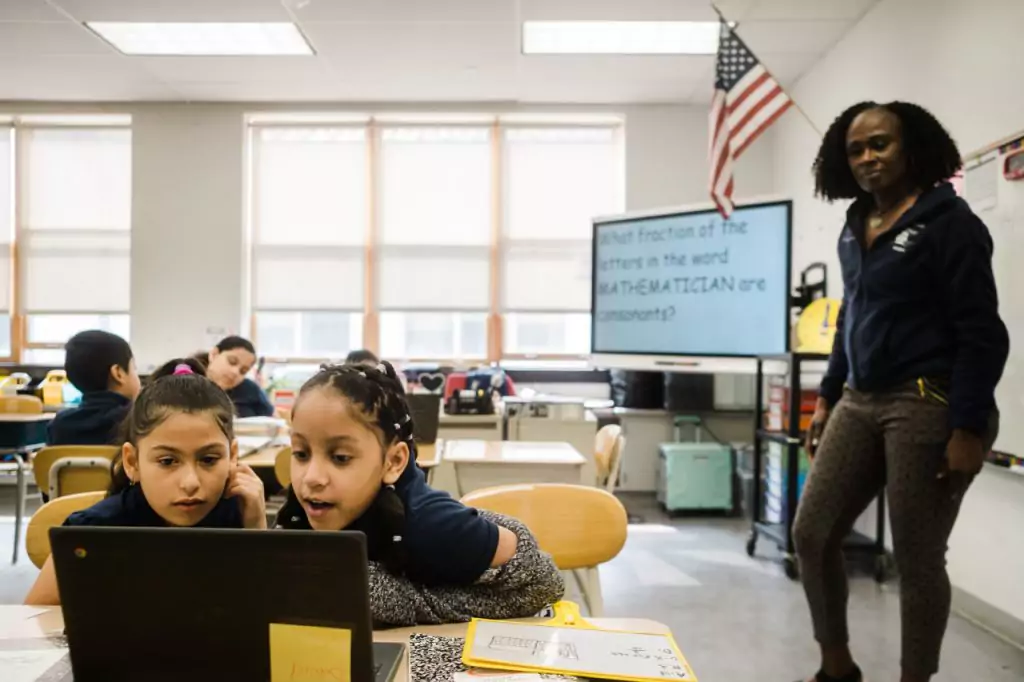AI is still the talk of the town. Debates about whether there is a place for AI tools in education are heated and active. The integration of AI tools in English language arts (ELA) is revolutionizing traditional teaching methods. With real-time feedback from AI-driven platforms, students are encouraged towards self-directed learning and refined writing. This not only eases the grading process for educators but also prepares students for a digital-centric future.

✅ AI Essay Writer ✅ AI Detector ✅ Plagchecker ✅ Paraphraser
✅ Summarizer ✅ Citation Generator
Key Takeaways:
- AI tools in education, especially in English Language Arts, are radically transforming traditional teaching methodologies.
- Real-time feedback from AI platforms encourages students toward self-directed learning and refined writing practices.
- The potential of AI tools, like “Project Topeka,” enhances student engagement through immediate feedback and diverse topic choices.
- AI’s power lies in its ability to offer personalized feedback akin to one-on-one sessions with educators.
Transforming ELA With AI
The landscape of English education is undergoing a radical transformation, and at the center of this evolution is the incorporation of Artificial Intelligence (AI). Molly Castner, an English teacher with a penchant for innovation, shares her insights on this development.
Before the world grappled with the COVID-19 pandemic, Castner was already exploring the potential of an AI program named “Project Topeka” for teaching argumentative writing. Castern remarked:
“I was drawn to using AI primarily because, with large class sizes, it becomes immensely challenging to provide instantaneous, meaningful feedback.”
With tools like Topeka, students not only receive real-time feedback but also enjoy the flexibility of diverse topic choices, enhancing their engagement.
Elaborating on the transformative power of AI, Castner mentioned:
“AI allows students to critically analyze their writing in ways akin to a personalized one-on-one session with a teacher. It’s akin to the transition in mathematics when calculators became mainstream, replacing slide rules. The essence is not to fear the change but to harness its potential for better learning outcomes.”
However, the journey with AI is not devoid of challenges. Castner candidly shared an incident where some students relied heavily on another AI tool, ChatGPT, leading to inauthentic responses. Addressing this, she emphasized:
“It’s crucial that students understand the tool’s purpose. AI can be a great assistant, but it should never overshadow or replace their unique voice and critical thinking.”
She further guided students with a poignant message:
“You are still a thinking and feeling human being. Never give up your voice for AI.”
For Castner, the excitement about AI in English teaching is obvious:
“It’s transformative to see students get instant feedback. For areas like grammar, which I would have taken hours to comb through, AI tools now provide feedback in mere seconds.”
However, every coin has two sides. Castner candidly highlighted a few shortcomings:
“Sometimes, AI feedback can be vague, making it tough for budding writers to decode. These moments become pivotal for learning. It opens doors for in-depth discussions, turning ambiguities into constructive learning opportunities.”
In essence, while AI tools are undoubtedly revolutionizing English education, Castner’s journey underscores the importance of blending technology with a human touch, ensuring that the essence of learning remains undiluted.
“Let’s not resist new technological waves. Instead, let’s ride them, guiding our students to wield these tools with responsibility and integrity. If you’re leveraging an AI tool like ChatGPT, acknowledge it. It’s about distinguishing your original ideas from assisted ones.”
The Future of Education: AI and Language Arts
As we look toward the future, it’s evident that AI will play an integral role in shaping language arts education. The rapid feedback and analysis capabilities of AI can offer students insights that were previously unthinkable due to time constraints. Imagine a student authoring a composition and receiving real-time feedback not just on grammar, but on tone, style, and context relevance.

Furthermore, AI tools can be integrated into the classroom as resources to aid in research, brainstorming, and even collaborative learning. With the help of AI, students from different parts of the world could collaborate on a joint project, receiving real-time translation and contextual insights, bridging the cultural and linguistic gaps.
However, it’s essential to remember that AI should complement human instruction, not replace it. The nuances of language, culture, and emotion are aspects that AI is still grasping. Hence, a blend of traditional teaching methodologies and AI-powered resources might be the ideal pedagogical approach for the future.
The integration of AI tools in ELA instruction is a double-edged sword. While they bring a lot of benefits, like real-time feedback and personalized instruction, they also present challenges like potential misuse and over-reliance. However, with responsible use and continuous learning, educators can harness the power of AI to usher in a new era of English Language Arts instruction.
5 Ways to Use AI Tools In the Classroom
AI tools are becoming invaluable assets for educators who want to tailor their instruction to the unique needs of every student. Here’s a breakdown of how AI can be a game-changer in the classroom:
1. Crafting Diverse Lesson Materials
Differentiation in education means adjusting lessons based on each student’s readiness and interests. One of the challenges teachers face is making varied resources. With AI, teachers can input prompts like, “What are different ways to teach the central idea of a text?” ChatGPT, for example, might suggest methods like using visuals or specific reading techniques. While these aren’t ready-to-use lessons, they provide a foundation upon which educators can build.
2. Offering Multiple Content Representations
It’s beneficial for students to access content in various formats, be it videos, infographics, or written notes. Gathering diverse resources on a specific topic can be time-consuming. But with AI, teachers can simply request, “Provide resources on chemical reactions,” and receive a variety of educational materials. Though these AI-suggested resources should be reviewed for accuracy, they save teachers the effort of initial searches.
3. Imagining Real-World Assessment Methods
Moving beyond traditional testing, educators can encourage students to apply what they’ve learned in practical situations. AI can assist in brainstorming such assessments. For instance, if teachers ask about real-world applications of ratios, they might receive suggestions like using ratios in baking, reading maps, or analyzing sports statistics. These suggestions can then guide educators in crafting more hands-on, relevant evaluations.

4. Simplifying Complex Concepts
Some topics, especially abstract ones, can be challenging for students. Teachers often seek ways to break these down more simply. AI can provide insights here too. By asking how to teach concepts like ‘theme’ to younger students, teachers can get strategies that delineate the difference between theme and plot, or how to identify key messages, making the overall topic more digestible.
5. Personalized Teaching Strategies
One effective way to help students grasp new concepts is by relating them to their personal experiences or interests. AI can bridge the gap between academic topics and these interests. If a teacher knows a student is passionate about football, they might ask the AI, “How can football be used to explain the difference between connotation and denotation?” AI’s suggestions can thus help in tailoring lessons to resonate more with the student’s personal interests.
Follow us on Reddit for more insights and updates.





Comments (0)
Welcome to A*Help comments!
We’re all about debate and discussion at A*Help.
We value the diverse opinions of users, so you may find points of view that you don’t agree with. And that’s cool. However, there are certain things we’re not OK with: attempts to manipulate our data in any way, for example, or the posting of discriminative, offensive, hateful, or disparaging material.